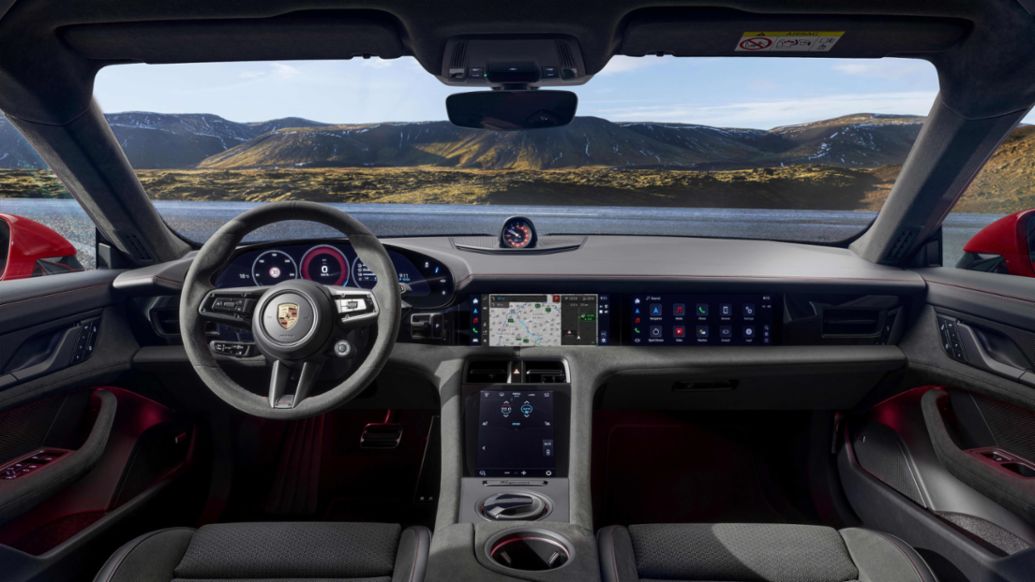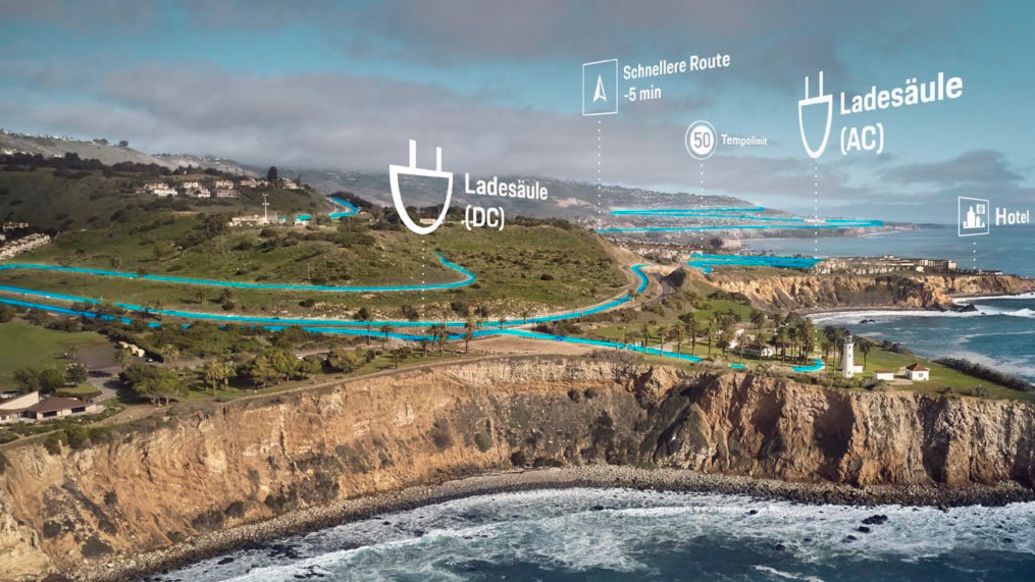Changing how we fuel our cars is not a new concept introduced by e-mobility. In the past, debates have centred around leaded or unleaded petrol, or regular or premium fuel. Today, discussions focus on fuel types like E5 and E10, or whether one should use 102- or 95-octane fuel. There are also apps to help drivers find the cheapest fuel stations nearby. Refuelling is a skill that needs to be learned – but once you’ve figured it out, it’s quite simple. The same applies to charging electric cars, says Kevin Giek, Vice President of the Taycan model line at Porsche. But being able to benefit from his knowledge means the chance to become an expert yourself.
The 10 per cent rule
His first and most important tip: “To charge quickly, the battery should have as little remaining energy as possible. Ten per cent is more or less ideal. Those who follow this will soon notice that charging also works well below that level, but around 10 per cent is optimal.” At suitable 800-volt DC fast-charging stations, the current Taycan charges at up to 320 kilowatts (kW), which is 50 kW more than the previous Taycan model. This reduces the charging time from 10 to 80 per cent state of charge (SoC) to 18 minutes – and not only in ideal conditions. The fast-charging window of the new Performance Battery Plus has also been significantly expanded.
This allows charging power above 300 kW for up to five minutes, and very high charging power can be achieved quickly even at low temperatures. Depending on the individual driving profile, this halves the required time to charge from 10 to 80 per cent compared to the previous model. For the first-generation Taycan, the charging time from 10 to 80 per cent SoC at a 15 degrees Celsius battery temperature is 37 minutes. Under the same conditions, the updated Taycan models require only 18 minutes, despite the higher battery capacity.
The 80 per cent rule
When it comes to how full the battery should be charged, Giek has clear ideas and advice: “If I have a long trip ahead, I fully charge the battery at home using a wallbox,” he says. “On the road, however, I sometimes only charge up to 60 per cent. After that, it starts to feel almost too slow.” The Porsche charging plateau is very high. Up to about 70 per cent, charging is at more than 300 kW, and it remains more than 200 kW up to around 75 per cent.

“If the day’s destination can be reached comfortably with 60 per cent, then I don’t charge any further because it slows after that. In the evening, I can fully charge again – preferably with AC to conserve the battery.” Beyond 80 per cent, fast-charging performance drops significantly. “It’s not worth staying at the charging station longer,” says Giek.
Porsche has made fast travel a priority in electromobility, as with all other company projects. “Through our charging planner, we try to show customers the optimal total travel time. That means if it’s more efficient to charge more than 60 or 70 per cent before the next stop, that will be suggested,” continues Giek. “Sometimes it’s better to charge twice briefly than once for a long time.” In any case, the charging planner always ensures perfect battery preconditioning to achieve the shortest possible charging times depending on the route plan.

Charging station pairing is crucial
At charging parks or facilities with multiple charging stations, newcomers can often be seen driving to a charging point where a car is already connected on one side. However, these users are often unaware that the station’s power is then halved, unless it’s an Ionity station or a Porsche Charging Lounge.
This is especially relevant for stations with a power output of 300 kW or more, which is then split into two, with half for each side. This can be particularly frustrating for owners of cars, like Porsche models, that can draw significantly more than 200 kW over a longer period of time. And of course, this also applies to stations with 150 kW.
“Many electric vehicles can easily handle this power. But when two cars charge at one point, only 75 kW per side is often available,” says Giek. “When I talk about this with other EV drivers while charging, I am very often told that they didn’t know this.” Outside peak times, when there are generally sufficient points for each user, it is mostly possible to access the full power output.
Full power means fast charging – and therefore shorter travel times. And this, as well as overall driving performance, is of great importance to Porsche. With e-mobility, performance has a dimension that cannot be achieved with conventional drive systems, says Giek. A low centre of gravity, axle load distribution, responsiveness, driving stability, driving pleasure – these are all points that can now be experienced on a completely new level.
"Enter Electric!“
The Volkswagen Group invites you to find out much more about electromobility with a cross-brand communication campaign. You can find more information about electromobility at Porsche on this Newsroom microsite.
